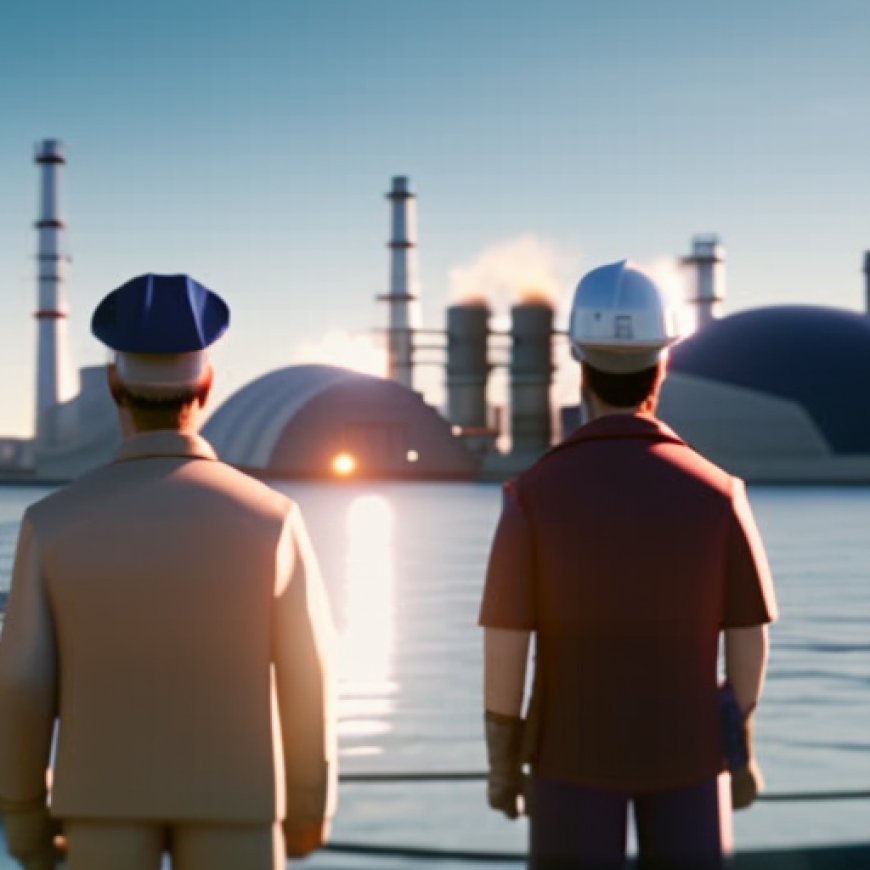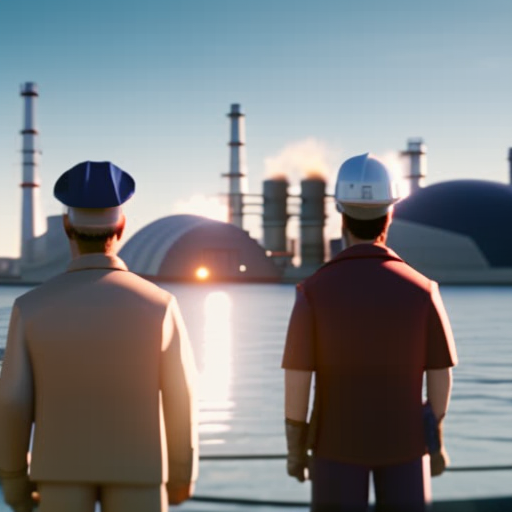Community members question industrial customer’s impact to Inner Harbor Desalination Facility
Industrial customer's impact on Inner Harbor Desalination Facility questioned KRIS 6 News Corpus Christi


Introduction

Background
The development of an Inner Harbor Desalination Facility in Corpus Christi, Texas has been a topic of discussion for several years. However, there is a concern among many community members that the facility will primarily benefit industrial customers rather than regular water users.
Opposing Views
Dr. Isabel Araiza, Founder of For the Greater Good, has been critical of the city’s decision to build a seawater desalination plant at the Inner Harbor. She believes that the project is designed to cater to the needs of industrial customers, stating, “Their costs are going to go up marginally, but still even now that their water rates have gone up, they still don’t compare to what our water rates are.”
Uncertainty about Impact
During a city council meeting in January, it was revealed that despite adequate research and data, the city remains unclear about the impact the desalination plant will have on the ratepayer. This lack of clarity raises concerns among community members.
Water Restrictions
Corpus Christi recently implemented stage 2 water restrictions due to a drop in reservoir storage levels below 30%. The city assures both regular and industrial customers will have to follow the same restrictive rules. However, Dr. Araiza questions the sustainability of promising large quantities of water to industries while potentially having to shut off the desalination plant and restrict water usage for regular users.
Accountability and Responsibility
Dr. Araiza emphasizes the need for industry accountability and responsibility. She urges industries to develop conservation plans and share them with the community. On the other hand, Bob Paulison, the Executive Director of the Coastal Bend Industry Association, believes that a desalination plant is the best option for a sustainable water source. He states, “A desalination plant starting in the Inner Harbor is the best way to strengthen our water supply.”
Rate Impact and Collaboration
The estimated rate impact on larger corporations remains uncertain, but Paulison expresses confidence in working with the city to understand the numbers. He also highlights that industrial customers will continue to pay their fair share for the new water source, just as they do for existing sources.
Building Process
City leaders are currently in the process of researching qualified firms to initiate discussions about the construction of the desalination facility.
Conclusion
The development of an Inner Harbor Desalination Facility in Corpus Christi has sparked debates regarding its potential benefits for industrial customers and its impact on regular water users. The city is still uncertain about the ratepayer’s burden and is in the process of selecting firms to further explore the construction of the facility. It is essential to consider the Sustainable Development Goals (SDGs) throughout this project to ensure equitable access to water resources and sustainable water management.
References
- City Council Approves First Vote for Inner Harbor Water Treatment Plant
- Corpus Christi Implements Stage 2 Water Restrictions
Latest News
- For the latest local news updates, click here
- To stay updated, download the KRIS 6 News App
SDGs, Targets, and Indicators
| SDGs | Targets | Indicators |
|---|---|---|
| SDG 6: Clean Water and Sanitation | 6.4: By 2030, substantially increase water-use efficiency across all sectors and ensure sustainable withdrawals and supply of freshwater to address water scarcity and substantially reduce the number of people suffering from water scarcity | – Reservoir storage levels dropping below 30% leading to stage 2 water restrictions – Unclear impact on ratepayers |
| SDG 9: Industry, Innovation, and Infrastructure | 9.4: By 2030, upgrade infrastructure and retrofit industries to make them sustainable, with increased resource-use efficiency and greater adoption of clean and environmentally sound technologies and industrial processes | – Development of an Inner Harbor Desalination Facility to provide a sustainable water source for industrial customers |
| SDG 12: Responsible Consumption and Production | 12.4: By 2020, achieve the environmentally sound management of chemicals and all wastes throughout their life cycle, in accordance with agreed international frameworks, and significantly reduce their release to air, water, and soil in order to minimize their adverse impacts on human health and the environment | – Need for industry to have a conservation plan and be responsible in water usage |
1. Which SDGs are addressed or connected to the issues highlighted in the article?
The issues highlighted in the article are connected to SDG 6: Clean Water and Sanitation, SDG 9: Industry, Innovation, and Infrastructure, and SDG 12: Responsible Consumption and Production.
2. What specific targets under those SDGs can be identified based on the article’s content?
Based on the article’s content, the specific targets that can be identified are:
- Target 6.4: By 2030, substantially increase water-use efficiency across all sectors and ensure sustainable withdrawals and supply of freshwater to address water scarcity and substantially reduce the number of people suffering from water scarcity.
- Target 9.4: By 2030, upgrade infrastructure and retrofit industries to make them sustainable, with increased resource-use efficiency and greater adoption of clean and environmentally sound technologies and industrial processes.
- Target 12.4: By 2020, achieve the environmentally sound management of chemicals and all wastes throughout their life cycle, in accordance with agreed international frameworks, and significantly reduce their release to air, water, and soil in order to minimize their adverse impacts on human health and the environment.
3. Are there any indicators mentioned or implied in the article that can be used to measure progress towards the identified targets?
Yes, there are indicators mentioned or implied in the article that can be used to measure progress towards the identified targets:
- – Reservoir storage levels dropping below 30% leading to stage 2 water restrictions: This indicates water scarcity and the need for sustainable withdrawals and supply of freshwater.
- – Unclear impact on ratepayers: This indicates the need for increased water-use efficiency and addressing the concerns of people suffering from water scarcity.
- – Development of an Inner Harbor Desalination Facility to provide a sustainable water source for industrial customers: This indicates the upgrading of infrastructure and adoption of clean technologies for sustainable industrial processes.
- – Need for industry to have a conservation plan and be responsible in water usage: This indicates the need for environmentally sound management of water resources and reduction of adverse impacts on the environment.
4. SDGs, Targets, and Indicators
| SDGs | Targets | Indicators |
|---|---|---|
| SDG 6: Clean Water and Sanitation | 6.4: By 2030, substantially increase water-use efficiency across all sectors and ensure sustainable withdrawals and supply of freshwater to address water scarcity and substantially reduce the number of people suffering from water scarcity | – Reservoir storage levels dropping below 30% leading to stage 2 water restrictions – Unclear impact on ratepayers |
| SDG 9: Industry, Innovation, and Infrastructure | 9.4: By 2030, upgrade infrastructure and retrofit industries to make them sustainable, with increased resource-use efficiency and greater adoption of clean and environmentally sound technologies and industrial processes | – Development of an Inner Harbor Desalination Facility to provide a sustainable water source for industrial customers |
| SDG 12: Responsible Consumption and Production | 12.4: By 2020, achieve the environmentally sound management of chemicals and all wastes throughout their life cycle, in accordance with agreed international frameworks, and significantly reduce their release to air, water, and soil in order to minimize their adverse impacts on human health and the environment | – Need for industry to have a conservation plan and be responsible in water usage |
Behold! This splendid article springs forth from the wellspring of knowledge, shaped by a wondrous proprietary AI technology that delved into a vast ocean of data, illuminating the path towards the Sustainable Development Goals. Remember that all rights are reserved by SDG Investors LLC, empowering us to champion progress together.
Source: kristv.com

Join us, as fellow seekers of change, on a transformative journey at https://sdgtalks.ai/welcome, where you can become a member and actively contribute to shaping a brighter future.







